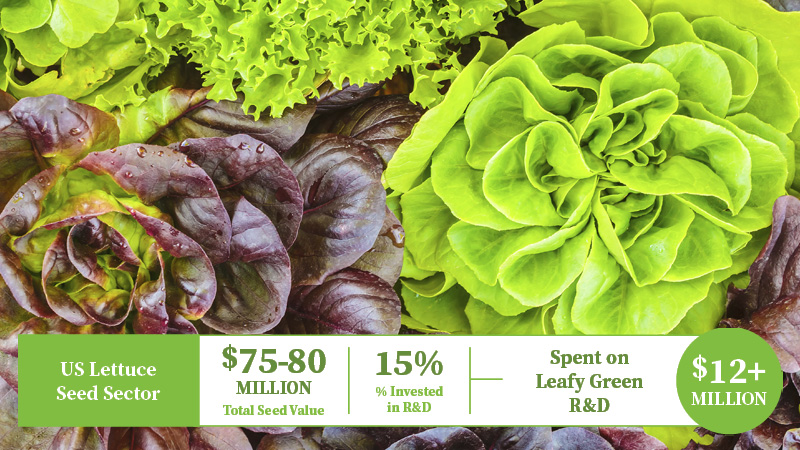Lessons Learned From SWD In Michigan
 Michigan fruit researchers and growers have had several seasons of dealing with the potentially devastating consequences of spotted wing drosophila (SWD) arriving in the Great Lakes region. Rufus Isaacs, a professor of entomology at Michigan State University (MSU) reflects on the lessons learned along the way with a few years of controlling SWD under growers’ belts in Michigan.
Michigan fruit researchers and growers have had several seasons of dealing with the potentially devastating consequences of spotted wing drosophila (SWD) arriving in the Great Lakes region. Rufus Isaacs, a professor of entomology at Michigan State University (MSU) reflects on the lessons learned along the way with a few years of controlling SWD under growers’ belts in Michigan.
Q: What have you learned about SWD so far?
Isaacs: It is clear that SWD is a challenging new insect pest for growers of susceptible crops, and that its management needs to be a priority for those growers to harvest high quality fruit.
Q: What type of habitats does SWD tend to favor?
Isaacs: SWD likes to be in the shade in more humid areas and it is able to persist on wild fruiting plants outside of crop fields. Because of this, we tend to find it in wild habitats a little earlier than in crop fields. These areas are refuges for SWD and so we also see the pest pressure is higher at field perimeters adjacent to these wild habitats.
Q: What type of spray coverage should growers consider to have the most control on SWD?
Isaacs: Because SWD prefers to be in shaded areas, it is important that sprays are penetrating into the plant canopy. A quick check with some water-sensitive paper can be useful for seeing whether your water volume and sprayer settings are getting the job done.
Q: What insecticides would you recommend for growers in control of SWD?
Isaacs: From our work in Michigan and the other research reports I have seen, the top-performing insecticides against SWD include Mustang Maxx, Danitol, Lannate, Delegate, Imidan, and Exirel. There are some others with good activity, but these six have the most consistent high rankings by fruit entomologists across the United States.
Q: What other steps should growers take in 2014 against SWD?
Isaacs: It is important to be monitoring for this pest. Using baited traps will allow a grower to determine when SWD becomes active on your own farm and where the hot spots are. Sampling the fruit for larvae using a simple salt solution (one cup of salt per gallon) can also help you know if your spray program is working and whether the fruit can be harvested. Where it is possible, more rapid harvesting can help reduce SWD infestation.
It is also clear that rapid chilling of fruit after harvest will stop further development of SWD, and so this can be used to help reduce declines in quality or larval detections in fruit. Pruning your crop well is another approach, because it reduces hiding places for SWD, plus it has the added benefit of helping get better spray penetration of the crop canopy.
Finally, small growers or those with hoop house structures installed already might be interested in using exclusion netting to keep SWD out of their plantings. This is something we are testing this summer in raspberry and blueberry.
Q: Is there a common mistake growers make when trying to manage SWD?
Isaacs: Don’t assume its not there because you haven’t had it before, and don’t assume that their programs for managing other fruit flies (e.g. blueberry maggot, cherry fruit fly) will work against SWD. This pest has caught some people by surprise because it is tiny and can go undetected until infestations are quite high. So, not monitoring, or thinking you don’t have it, has led to some problems with SWD at harvest time. Stretching spray intervals too long or waiting too late to start protecting the crop have also caused problems.
Q: What type of research is being conducted on SWD this season and moving forward?
Isaacs: There is so much! It seems that every fruit entomologist in North America and Europe who have an interest in berry, cherry, or grape crops is doing something to address this pest. Chemical, physical, cultural, genetic, molecular, and biological approaches are being studied from all angles. The recent publication of the SWD genome will facilitate whole new directions of research too.
Q: Will the cold winter affect the pressure growers see from SWD this year?
Isaacs: We don’t have enough seasons of experience to say. The super-cold winter of 2013-14 was also a snowy winter, and so overwintering flies would have been quite protected under that insulating later or up against buildings. So, I expect SWD to be back again in time for later summer fruit crops. I’m advising growers to be ready for it, and the monitoring will tell us whether the winter had an effect.
MSU Extension will be starting its weekly SWD reporting in June. Visit our website at IPM.MSU.edu/SWD.htm for management guides and for the weekly reports.
Q: How can growers help contribute to the research?
Isaacs: We have had great cooperation from growers allowing us access to their fields for our research. Maintaining support for the research stations, Cooperative Extension, and applied research programs at the land grant universities, and for the IR-4 program, will be essential for addressing this invasive pest — and the next one.










